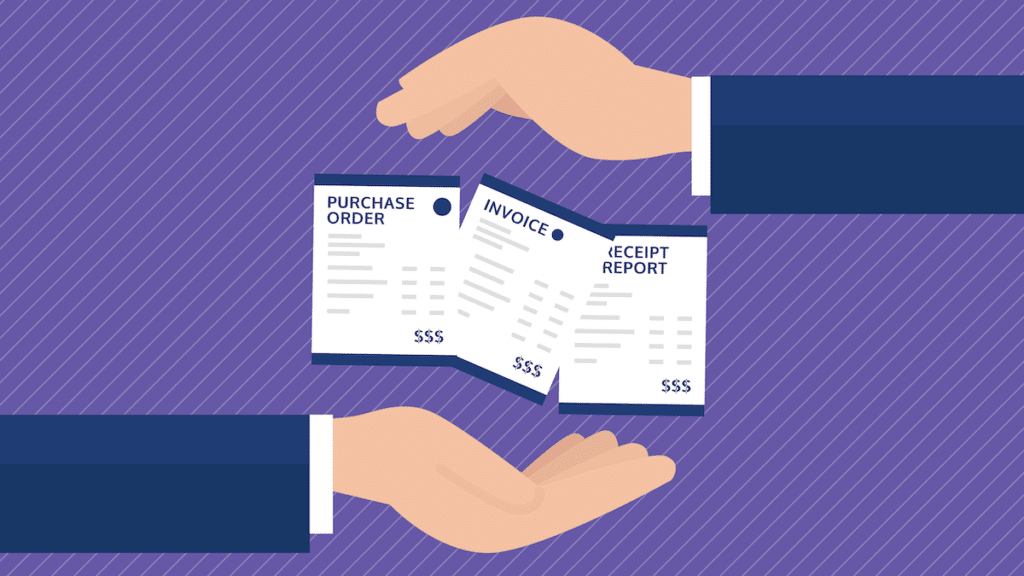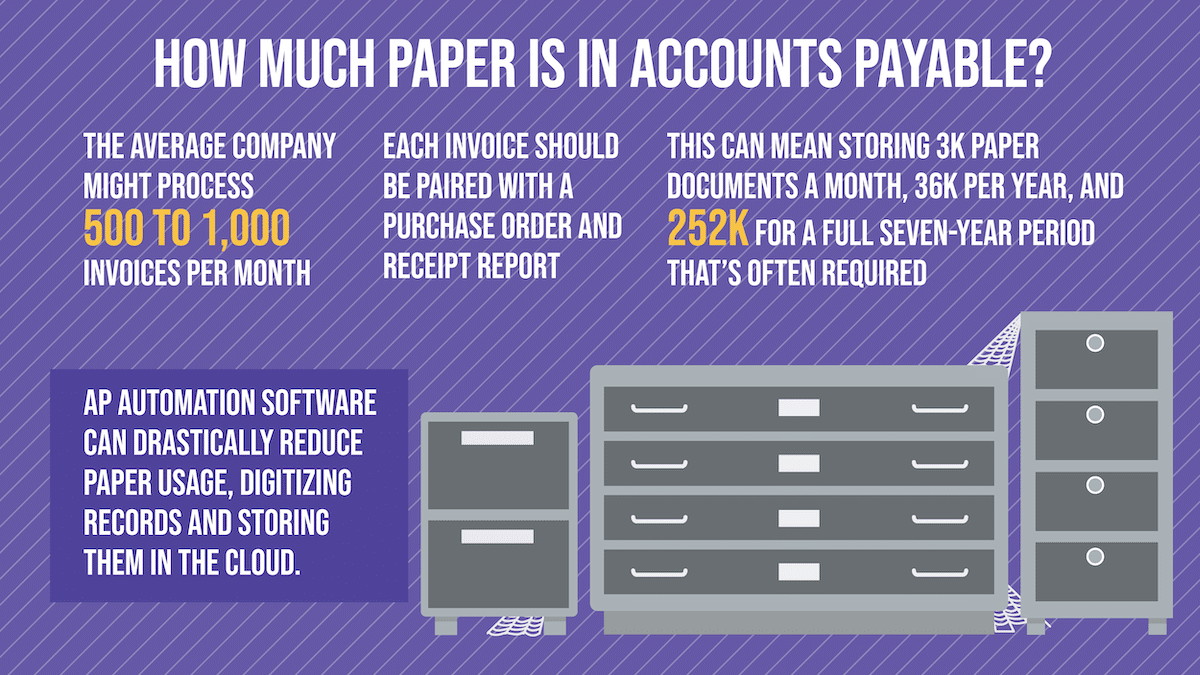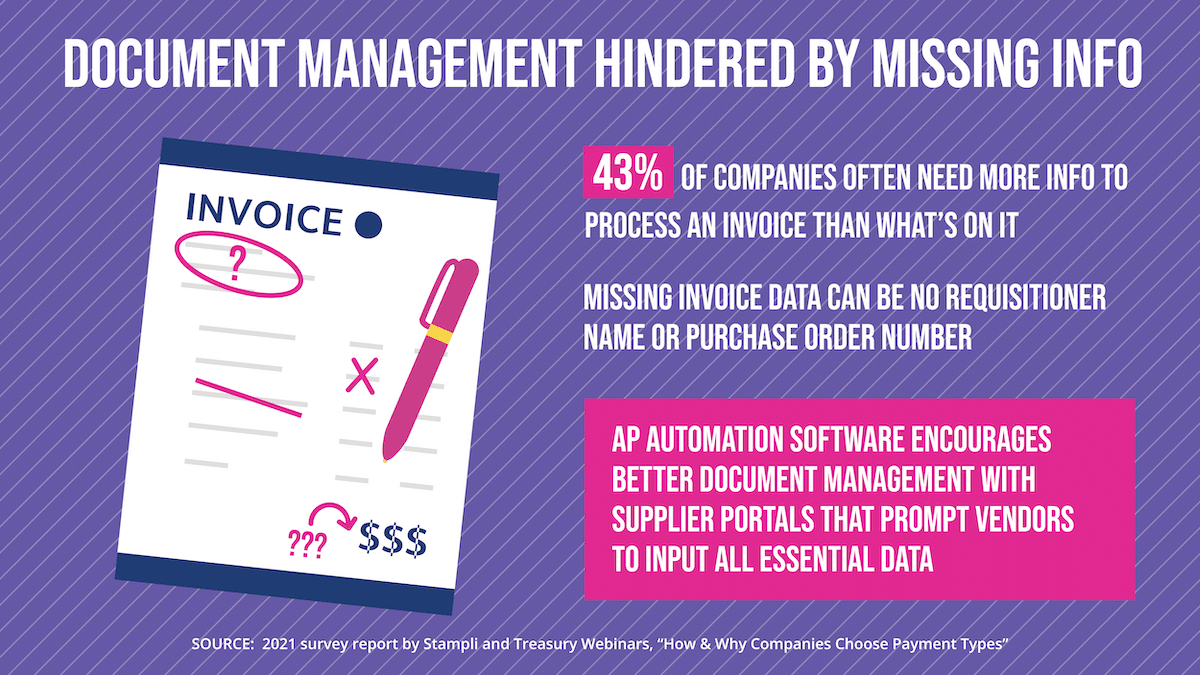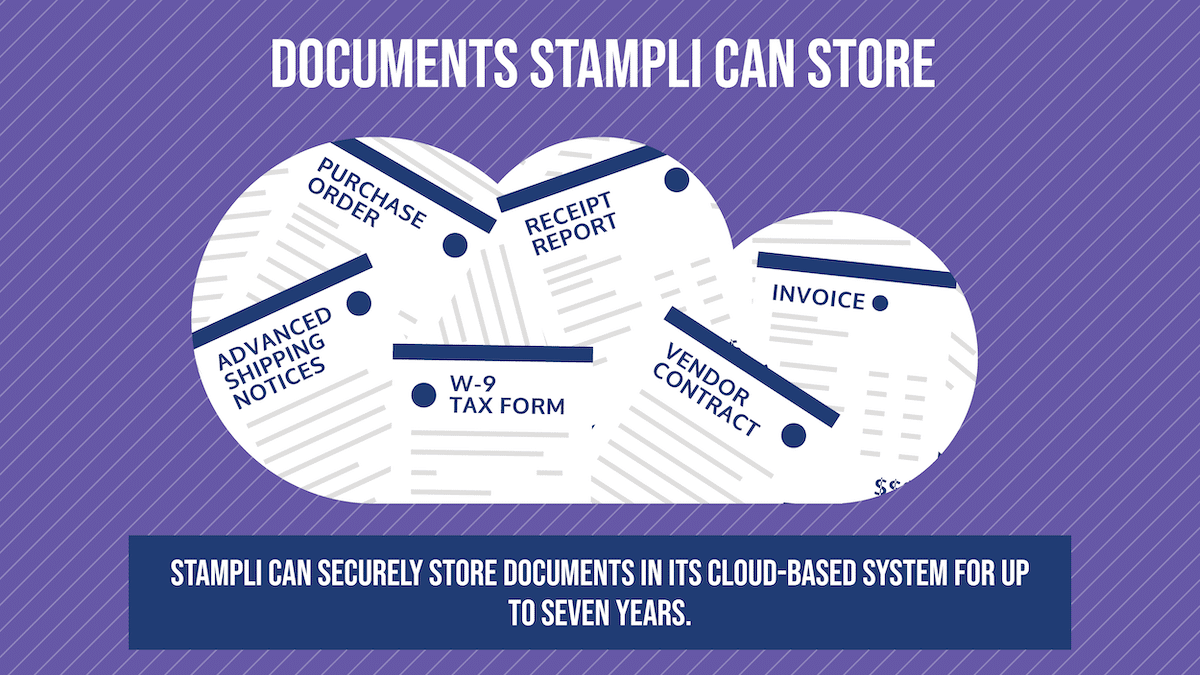Accounts Payable Document Management 101: Why to Automate It

With efficient document management, accounts payable (AP) work hums along.
After all, AP isn’t just about paying bills. It’s about matching invoices with purchase orders, receipt reports, and other documents to prove transactions are real. It’s about maintaining documents for the sake of compliance, audits, and dealing with invoice exceptions. It’s about being the first and arguably best line of defense for a company’s purchasing history.
That said, far too many companies still stick with manual accounts payable document management. Perhaps they’re worried about the cost or the work involved to digitize years or even decades of accounts payable documents. Still, it’s easier than companies might think for them to start implementing better accounts payable document management practices. Join us as we explore what it takes.
Accounts Payable Document Management Basics

First, let’s explore a few basics of accounts payable document management.
Accounts Payable Document Management, Defined
Essentially, when a company opts to make a purchase, particularly on credit, it doesn’t just happen. Nor does the purchase often just involve a single call, email, or sheet of paper. Maybe it did at some point, but accounts payable has evolved into sophisticated work.
These days, every purchase a company makes can generate a paper trail from procurement to payment, including POs that prove an order was placed, receipt reports showing it arrived, and invoices that display a vendor’s price and payment terms. And this is the minimum paper trail, assuming an invoice exception or other issue doesn’t result in a payment delay, which can lead to a flurry of additional documents such as emails from anxious vendors.
In short, accounts payable document management is about managing all of the paperwork that accumulates from any given transaction.
Why Document Management Matters in Accounts Payable
It’s vitally important for companies to maintain a purchasing paper trail with good accounts payable document management practices, for a variety of reasons such as:
- Regulatory requirements. Public companies, of course, must follow the Sarbanes-Oxley Act of 2002. Meanwhile, private firms have their own state and federal compliance obligations and must follow Generally Accepted Accounting Principles (GAAP). Both public and private businesses will need to retain contracts and W-9 forms for their vendors.
- Painless three-way matching of purchase orders, receipt reports, and invoices, which can turn into a sisyphean ordeal without software that can automatically group these documents together and pair them with their general ledger entry;
- Helping companies avoid paying duplicate invoices or unknowingly paying more than was agreed upon at the outset of a purchase. Whether innocently or knowingly, a lot of vendors submit extra invoices, with a survey by Stampli and AP Now, “Common Invoice Problems: How to Deal with Them” finding that 27% of respondents were getting invoices more than once.
Perhaps some very small companies can accomplish all of their accounts payable document management with paper files. But for many companies that try to do accounts payable document management without automation, it can lead to nightmare scenarios with paper use.
How Paper Documents can Swamp Accounts Payable
The average mid-sized company might process 500 to 1,000 invoices in a month depending on the industry, and includes everything from paperclip orders or materials to a new enterprise resource planning (ERP) system. Let’s do a little math here to show how much paper this might lead to for AP.
First, multiply every one of those transactions by a minimum of three, for the accompanying purchase order, receipt report, and invoice that gets three-way matched. This can mean 3,000 documents heading to AP in a month and 36,000 in a year. Then consider that AP generally needs to retain documents for a minimum of seven years. This means an accounts payable department might have north of 250,000 paper documents at any time.
Not surprisingly, companies would love to cut the clutter. Stampli and Treasury Webinars found in a 2021 study, “The How, the Why and the ROI of AP Automation,” that excessive amounts of paper was the top reason for investing in AP automation, cited by 35% of survey respondents. AP automation can slash accounting’s paper usage, securely storing every document a company could need in the cloud. There are other benefits, too.
3 Benefits of Automating Accounts Payable Document Management

Accounts payable document management doesn’t have to be laborious or take down entire forests with paper usage. Here are a few reasons to automate document management in AP.
1. Better Communication and Supplier Relationships
A 2021 survey report by Stampli and Treasury Webinars,” How & Why Companies Choose Payment Types” noted a few interesting stats that are likely interlinked.
First, it found that 43% of businesses “often need more information to process an invoice” than the info that’s on it (a common culprit is likely missing PO numbers). The report also found just 38% of businesses were communicating proactively with their suppliers. Then it noted that 30% of companies admitted the technology they were using hindered their supplier relationships.
How are these stats connected and related to accounts payable document management? Companies without adequate AP technology are more likely to have manual processes, storing paper documents and reactively contacting suppliers when data is missing. It can easily lead to payment delays and frayed nerves on both sides.
With AP automation software, though, companies get a far cleaner payment process. The software often comes standard these days with supplier/vendor portals, where vendors can enter their invoice information directly. Should the supplier forget a detail, proactive communication tools embedded in the system can help foster productive dialogue between both sides.
2. Remote Accessibility of Documents
It used to be that accounts payable work had to be done largely on-premises and certainly, a lot of companies still swear by this, right or wrong. However, the COVID-19 pandemic has almost certainly accelerated a shift that’s been subtly underway in AP for years, forcing more teams to work remotely.
For some AP departments that rode into the pandemic with no digitized accounts payable document management, their leaders faced a series of tough choices. They either had to keep up in-person accounting operations or develop a way to get digital versions of documents to AP staff as needed. Many vendors still send in paper invoices, so there was maybe going to be friction no matter what.
All the same, companies with AP automation generally don’t have to worry as much about document accessibility, in good times or in bad. Documents are available and accessible from wherever key staff might be working. And aside from pandemic preparedness, it’s also great for the distributed nature of AP work.
3. Better Audit Readiness
An auditor can show up to an office at any minute, even an internal auditor. This can be because an auditor doesn’t want to arrive to a scripted performance, where staff try to lead them to conclusions. A good auditor wants a clear and unfiltered look at the company they’re examining. And they want information quickly available.
Accordingly, this can also mean loads of stress for the CFO or other business leaders such as a Financial Controller on the receiving end of an audit. It’s their responsibility to ensure all necessary documentation is available for the auditor as soon as they need it. Failing to accommodate this can unnecessarily prolong and compound the cost of the audit.
But AP automation software can store all documents in the cloud in audit-ready and read-only format, meeting Sarbanes-Oxley and other requirements. There will be no frantic dash into an old, dusty filing room as an auditor stands uncomfortably, glancing at their watch as they wait to start their work.
Automating Your Accounts Payable Document Management with Stampli: How to Get Started

For those companies ready to begin automating their accounts payable document management, here are some ways that Stampli can help.
Quick Implementation, Even if Your Documents Are Scattered
A company without AP automation software in-place might worry that their accounts payable document management practices are so outdated that they’re in for a nightmare implementation. Perhaps some older employees remember the bad old days of what accounting system builds used to be, when proprietary, on-premises development might take several months.
With Stampli, though, there’s no stress when it comes to getting an AP automation system up and running. Stampli’s team of experts can get a system up and running for the companies it works with in weeks, not months.
From there, Stampli’s customer service team does legwork for setup and also functions as a consultant to help customers strategize the best way for companies to support their processes and existing accounting systems. Digital documents can be sent into the Stampli system and even paper invoices or supporting documents as well. Stampli’s AI tool Billy the Bot is able to recognize data and code it into your general ledger and ERP. The more invoices Billy the Bot scans, the better Billy learns your unique accounting processes and coding.
Easy Document Integration with Your ERP
Accounts payable work can be so siloed sometimes, particularly for companies that lack AP automation. When an invoice, purchase order, or other important document related to a purchase arrives, there’s no guarantee that it will even make it into an ERP or accounting system. It’s one of the reasons accounts payable document management can remain such a challenge for so many companies.
But AP automation via Stampli makes it so that documents get automatically entered, via AI, as they are sent directly to the system, arrive in an email inbox or are scanned into the system. There’s also easy access and the chance to seamlessly make adjustments to the information from these documents, ensuring the best data is available in your system.
All in all, it’s just one more way that good accounts payable document management isn’t just more efficient from a process standpoint, but more strategic for broader companies.
Manage your AP documents like a pro. Try automated accounts payable document management with Stampli today.
